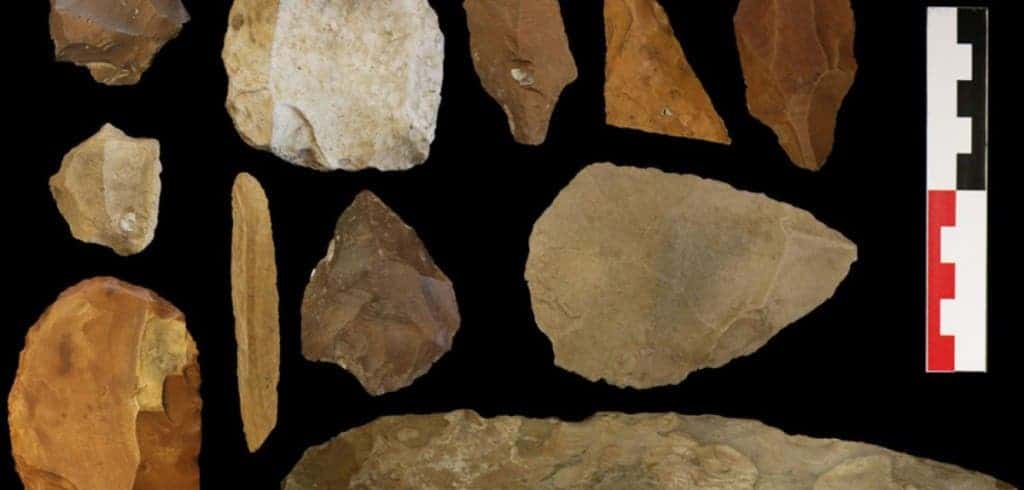
Stone tools from Kharga Oasis, Egypt, one of the archaeological sites used in the study. Photograph: The British Museum
Early modern human populations were culturally diverse and sometimes exchanged tools helped by river networks in a then savanna rich Sahara, according to the biggest ever comparative study of stone tools dating to between 130,000 and 75,000 years ago. At least four distinct populations, each relatively isolated from each other, have been identified as possessing distinct cultural practices.
Different tools, different cultures
The researchers from the University of Oxford, Kings College London and the University of Bordeaux took over 300,000 measurements of stone tools from 17 archaeological sites across North Africa, including the Sahara. Before early humans left Africa to settle communities in Eurasia, the Sahara we know today as a barren and inhospitable wasteland was considerably different. There were widespread areas filled with patchwork of savanna, grasslands and water, while the desert was interspersed between.
When assessing how ancient communities developed, it’s important to have a really accurate picture of how the climate was at the time, being an important element that puts things into context. With this in mind, the researchers studied climate models coupled with data about these ancient water courses, before finally matching these with new found data surrounding cutting tools. Because Africa’s extremely hot climate, ancient DNA has yet to be found and the most reliable artifacts that document the existence of early modern humans continue to be stone tools.
[RELATED] Neanderthals developed the first bone tools
Armed with this new found data, the researchers were able to infer the context in which the ancient populations made and used their tools. For the first time, tangible evidence was obtained that suggest early human communities were ‘budding’ with other populations along the ancient rivers and watercourses.
‘This is the first time that scientists have identified that early modern humans at the cusp of dispersal out of Africa were grouped in separate, isolated and local populations. Stone tools are the only form of preserved material culture for most of human history. In Africa, owing to the hot climate, ancient DNA has not yet been found. These stone tools reveal how early populations of modern humans dispersed across the Sahara just before they left North Africa. While different populations were relatively isolated, we were interested to find that when connected by rivers, they share similarities in their tool-making suggesting some interaction with one another,’ said Dr Eleanor Scerri, visiting scholar at the University of Oxford.
The researchers were careful to remove some of the causes that produce variability, but were not particularly tied to cultural characteristics, like raw materials.
‘Not much is known about the structure of early modern human populations in Africa, particularly at the time of their earliest dispersals into Eurasia. Our picture of modern human demography around 100,000 years ago is that there were a number of populations, varying in size and degree of genetic contact, distributed over a wide geographical area. This model of our population history supports other theories recently put forward that modern humans may have first successfully left Africa earlier than 60,000-50,000 years ago, which had been the common view among scholars. Our work provides important new evidence that sheds light on both the timing of early modern human dispersals out of Africa and the character of our interaction with other human species, such as Neanderthals,’ said Scerri.
Thanks to a growing body of evidence, the paradigm has shifted from asking whether or not humans originated from Africa, then spread out to the rest of the world, to the question ‘which of these distinct populations went in and out of Africa?’. A crucial next step involves fieldwork in areas such as the Arabian Peninsula to understand how these populations spread into Eurasia.
The findings were reported in the journal Quaternary Science Reviews.









